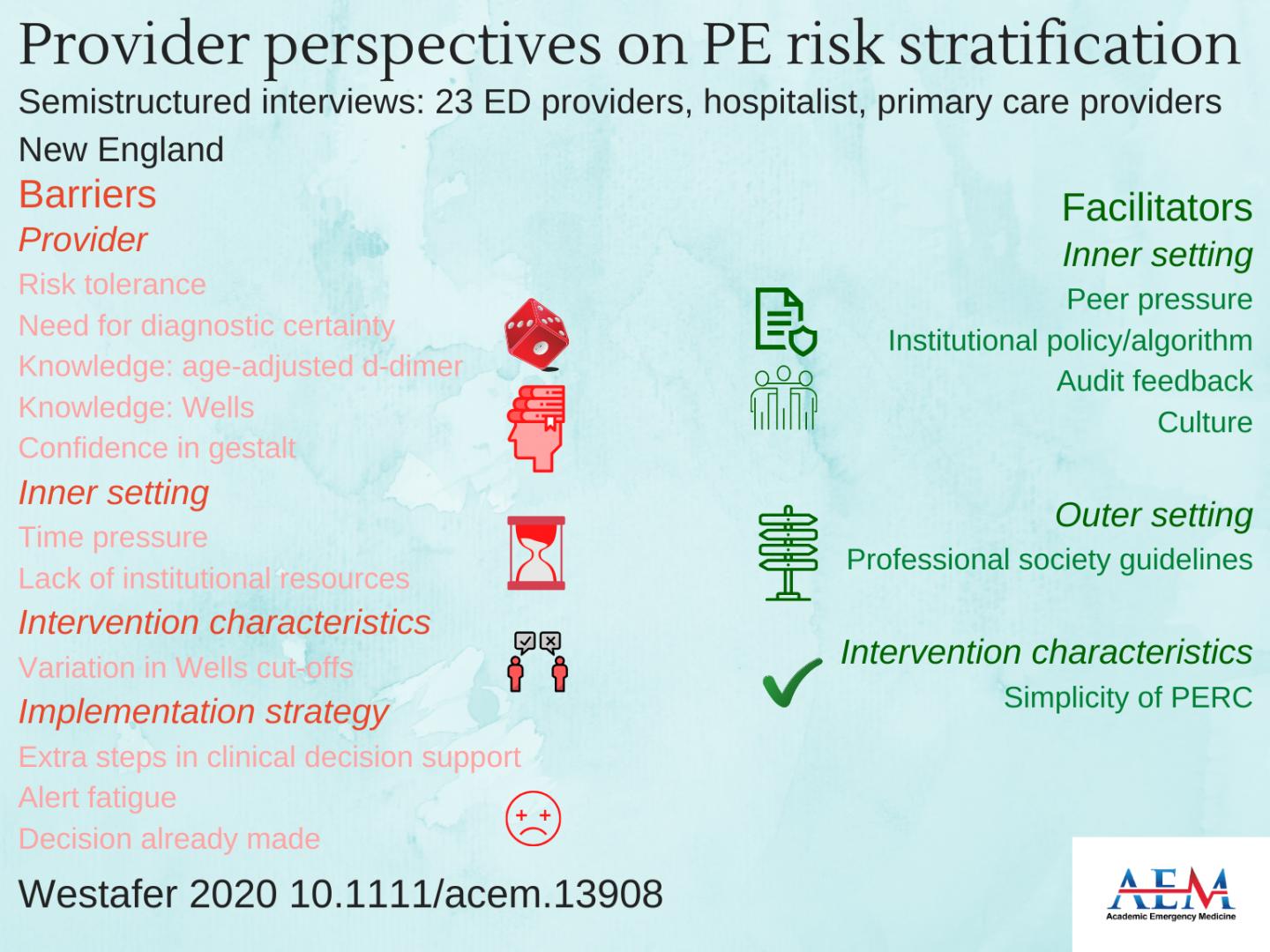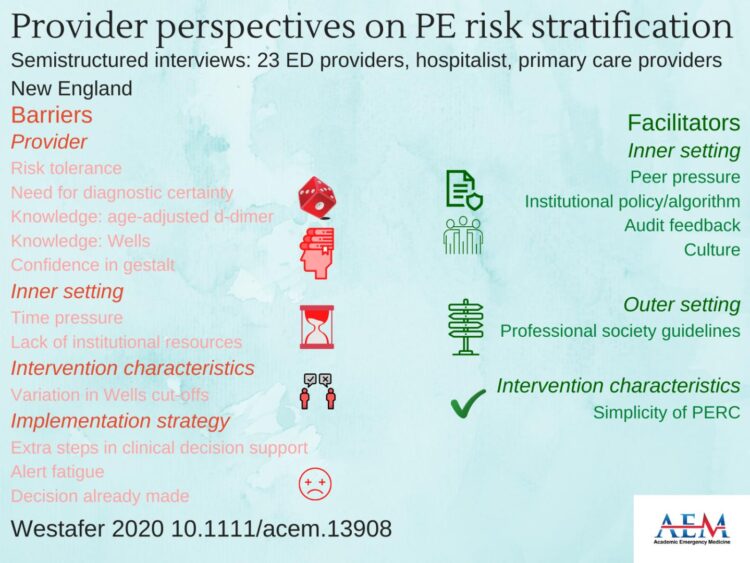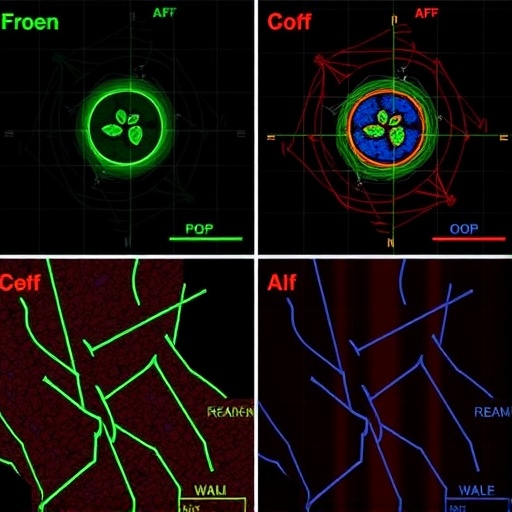
Credit: Kirsty Challen, B.Sc., MBCHB, MRES, Ph.D., Lancashire Teaching Hospitals, United Kingdom
DES PLAINES, IL — Common barriers exist to the use of risk stratification tools in the evaluation of pulmonary embolism in the emergency department and provide insight into where to focus efforts for future implementation endeavors. That is the conclusion of a study to be published in the June 2020 issue of Academic Emergency Medicine (AEM), a journal of the Society for Academic Emergency Medicine (SAEM).
The lead author of the study is Lauren M. Westafer DO, MPH, MS, assistant professor, Department of Emergency Medicine, University of Massachusetts Medical School-Baystate. The findings of the study are discussed in a recent AEM podcast, Teacher, Teacher — Tell Me How to Do It (Diagnose a PE).
According to the study findings, provider-level factors such as risk avoidance and lack of knowledge of the tools dominated as barriers, while inner-setting factors were identified as facilitators.
The authors recommend that future efforts to improve evidence-based diagnosis of pulmonary embolism should focus on implementation strategies targeting these domains.
Commenting on the study is Dr. Kerstin de Wit, an emergency and thrombosis physician and Hamilton Health Sciences and an assistant professor in the department of medicine at McMaster University, Hamilton, Ontario, Canada.
“This important study highlights several common thought processes which act as barriers for emergency physician use of evidence-based pulmonary embolism testing. The authors identified opportunities to promote adherence to evidence-based testing, including leveraging culture and peer pressure.”
###
ABOUT ACADEMIC EMERGENCY MEDICINE
Academic Emergency Medicine, the monthly journal of Society for Academic Emergency Medicine, features the best in peer-reviewed, cutting-edge original research relevant to the practice and investigation of emergency care. The above study is published open access and can be downloaded by following the DOI link:10.1111/acem.13908. Journalists wishing to interview the authors may contact Stacey Roseen at [email protected].
ABOUT THE SOCIETY FOR ACADEMIC EMERGENCY MEDICINE
SAEM is a 501(c)(3) not-for-profit organization dedicated to the improvement of care of the acutely ill and injured patient by leading the advancement of academic emergency medicine through education and research, advocacy, and professional development. To learn more, visit saem.org.
Media Contact
Stacey Roseen
[email protected]
Related Journal Article
http://dx.





